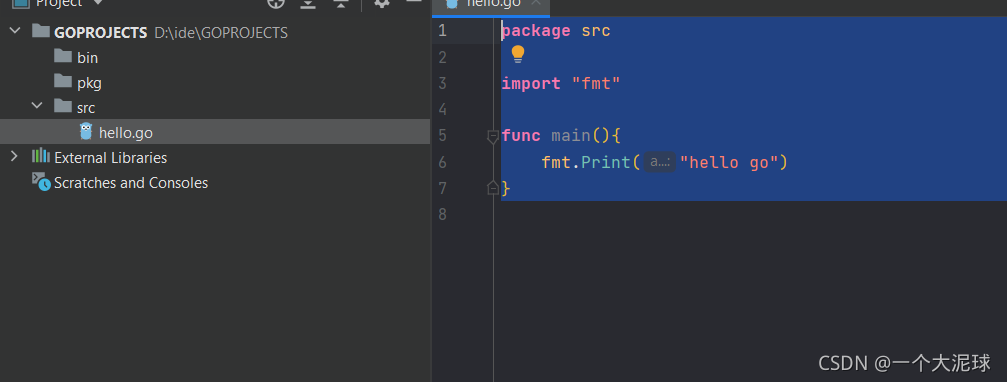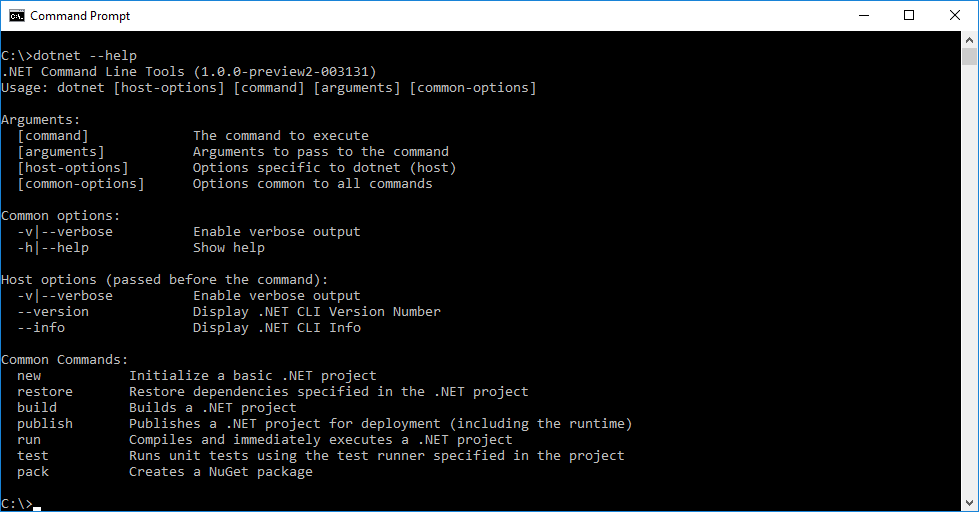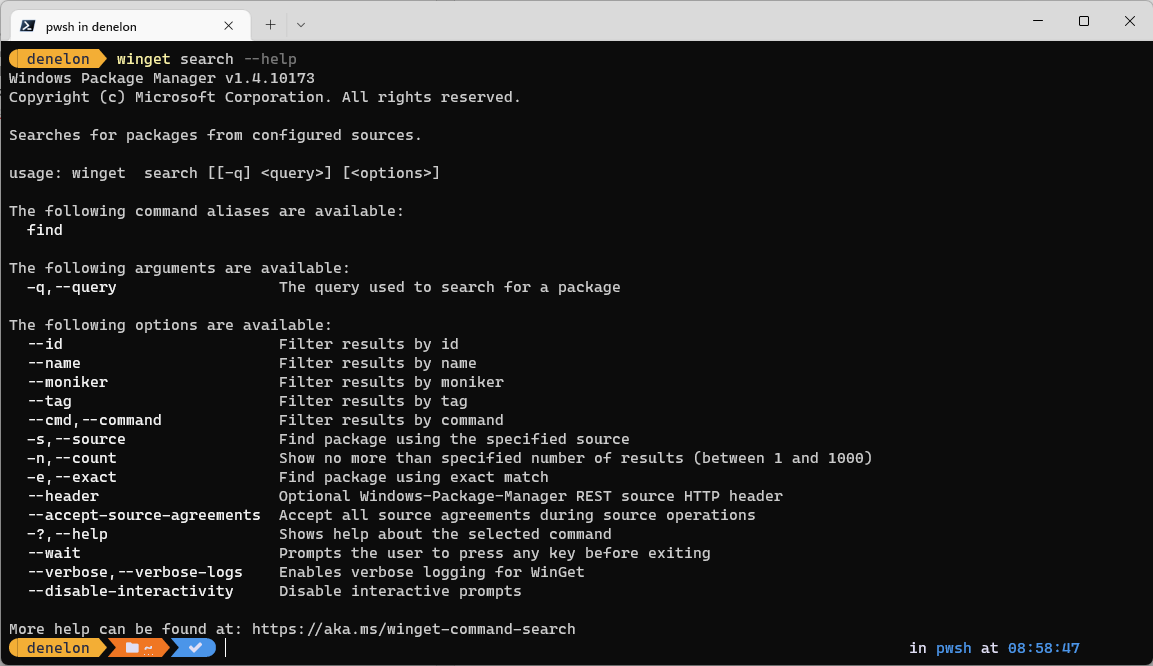Package Command-Line-Arguments Is Not A Main Package
1. Defining the package command-line-arguments
In Go programming language, the package command-line-arguments is a special package that allows developers to access and process command-line arguments within their programs. Command-line arguments are user-supplied input values that are passed to a program when it is executed in a command-line environment.
2. Differentiating between package and main package in Go
a. Explanation of the main package in Go
In Go, the main package is a special package that serves as an entry point for an executable program. It contains the main function, which is the starting point of the program’s execution. Only one main package can exist within a program, and it must be named “main” in order for the Go compiler to recognize it as the entry point.
b. Overview of packages in Go
In Go, packages are used to organize and structure code. They provide a way to group related functions, types, and other code elements together. Packages can be imported and used by other packages to leverage their functionality. Each Go program can consist of multiple packages, but only one package can be designated as the main package.
3. Discovering the purpose of the package command-line-arguments
a. Overview of command-line arguments
Command-line arguments are input values that are provided by the user when executing a program through the command line. These arguments are separated by spaces and can be used to pass information or configuration parameters to the program. They allow users to customize the behavior of the program without modifying its source code.
b. Using command-line arguments in Go programs
The package command-line-arguments in Go provides functions and variables that enable developers to access and process command-line arguments within their programs. It allows the program to retrieve the values passed by the user during runtime and utilize them in various ways, such as configuration settings, file paths, or input data.
4. How the package command-line-arguments is utilized
a. Accessing command-line arguments in Go code
To access command-line arguments in a Go program, developers need to import the package command-line-arguments using the import statement. Once imported, the program can access the command-line arguments through the variable ‘os.Args’. This variable is an array of strings, where each element represents a command-line argument.
b. Parsing and processing command-line arguments
Once the command-line arguments are retrieved, developers can use various techniques to parse and process them based on their specific requirements. Go provides built-in functions and libraries, such as the ‘flag’ package, for efficient parsing and validation of command-line arguments. These functions allow developers to define flags and options with specific data types and default values.
5. Limitations and drawbacks of the package command-line-arguments
a. Possible errors and issues with command-line arguments
The package command-line-arguments is powerful and flexible, but it also presents certain limitations and potential issues. Improper handling of command-line arguments can result in runtime errors, such as undefined command-line flags, invalid input values, or missing arguments. It is crucial for developers to implement proper input validation and error handling mechanisms to prevent unexpected behavior or crashes.
b. Managing unexpected user input
Command-line arguments are susceptible to unexpected user input, such as typos, invalid values, or missing arguments. Developers should consider scenarios where users provide incorrect or incomplete input and handle them gracefully. Proper error messages and usage instructions should be provided to guide the user in correcting their input and prevent potential issues.
6. Recommendations for using the package command-line-arguments effectively
a. Best practices for handling command-line arguments
To use the package command-line-arguments effectively, developers should adhere to best practices such as defining clear and concise command-line argument syntax, providing proper usage instructions, and implementing robust error handling. It is also advisable to validate user input and sanitize any potentially malicious input to ensure program security and stability.
b. Ensuring proper input validation and error handling
Developers should validate command-line arguments to prevent unexpected input from causing runtime errors or undesired behavior. Proper input validation ensures that the program operates within the expected parameters and avoids unexpected crashes. Error handling should also be implemented to gracefully handle any errors that may occur during the processing of command-line arguments.
7. Common use cases for the package command-line-arguments
a. Examples of popular applications utilizing command-line arguments
Many popular applications and tools extensively use command-line arguments. For instance, database management systems like PostgreSQL and MySQL often utilize command-line arguments for specifying connection configurations, usernames, passwords, and query execution options. Command-line interfaces, build tools, and testing frameworks also make use of command-line arguments to provide flexibility and customization options.
b. Practical scenarios where command-line arguments are beneficial
Command-line arguments are particularly useful in scenarios where programs need to be executed with different configurations or inputs repeatedly. For example, batch processing tasks, data automation scripts, and system administration tools benefit from the ability to pass different configurations or data sources via command-line arguments. This flexibility allows for easy customization and quick adaptation to diverse scenarios.
8. Alternatives to the package command-line-arguments
a. Exploring other approaches for handling command-line arguments
While the package command-line-arguments is a convenient and widely used approach for handling command-line arguments in Go, there are alternatives available, such as using third-party libraries like “cobra” or “pflag” that offer enhanced functionality and customization options. These libraries provide advanced features like subcommands, flag aliases, and more extensive flag handling capabilities.
b. Overview of additional packages and libraries that aid in handling command-line arguments
Apart from third-party libraries, there are other Go packages that can aid in handling command-line arguments effectively. The ‘flag’ package, for example, provides a simple and straightforward way to define and parse command-line flags and options. Additionally, packages like ‘os/exec’ and ‘os/signal’ can be utilized to execute external commands or handle system signals using command-line arguments.
9. Resources for further learning and references
a. Documentation and resources for Go’s command-line argument package
To gain a deeper understanding of the package command-line-arguments and its usage in Go, developers can refer to the official Go documentation. The documentation provides comprehensive information, examples, and best practices for working with command-line arguments in Go programs.
b. Additional references and tutorials for working with command-line arguments in Go
In addition to the official documentation, there are numerous online tutorials, articles, and community resources available that provide step-by-step guidance on working with command-line arguments in Go. These resources can help developers enhance their knowledge and learn advanced techniques for handling command-line arguments effectively.
In conclusion, the package command-line-arguments in Go is a vital tool for accessing and processing command-line arguments within programs. By understanding its purpose, utilizing best practices, and considering alternative approaches, developers can effectively handle command-line arguments and provide users with greater flexibility and customization options.
Golang Tutorials -36- Vs Code Auto Import Package Problem Solution For Golang | Dr Vipin Classes
Keywords searched by users: package command-line-arguments is not a main package Package is not a main package, Command line arguments golang undefined, Runtime main_main f: function main is undeclared in the main package, Package is not in GOROOT, Go run main. go not working, Package fmt is not in GOROOT, Found package main main go and, Package net netip is not in GOROOT
Categories: Top 41 Package Command-Line-Arguments Is Not A Main Package
See more here: nhanvietluanvan.com
Package Is Not A Main Package
In the world of software development, a package is a way of organizing and structuring code. It helps to improve code readability, maintainability, and reusability. However, not every package can be considered a main package. In this article, we will explore the concept of a main package and why some packages are not considered as such.
Understanding Packages
Before delving into the concept of a main package, let’s quickly review what a package is. In simple terms, a package is a collection of related classes and interfaces that are grouped together. These classes and interfaces are designed to perform specific tasks and interact with each other to achieve a common goal. Packages help organize codebases and promote modular programming.
What is a Main Package?
A main package, as the name suggests, refers to the top-level package that serves as the entry point for an application. It typically contains the main class or method, which is the starting point for executing the program. This main package is usually the core of the entire project, and it is responsible for orchestrating various functionalities and components within the application.
Packages That Are Not Main Packages
While every application needs a main package, not all packages can be classified as main packages. In fact, most packages in a project are not considered as such. These non-main packages contain classes and interfaces that serve specific purposes within the application but do not act as the entry point for execution.
For example, consider a web application project. The main package might be named “com.example.application” and contain the main class with the main method to start the server and handle requests. Other packages in the project, such as “com.example.application.controllers”, “com.example.application.models”, or “com.example.application.utilities”, are not main packages. They contain classes that handle specific functionalities like handling HTTP requests, managing data models, or providing utility functions, respectively.
Why are Some Packages Not Considered as Main Packages?
The reason some packages are not classified as main packages is because they contain supporting code rather than the core code responsible for the overall functioning of the application. These packages are created to enhance the functionality of the main package by encapsulating specific tasks and functionalities within their own domain. This promotes code organization and improves code reusability.
Moreover, treating every package as a main package would defeat the purpose of modular programming and package hierarchy. By categorizing packages based on their responsibilities, software developers can better understand the structure of the codebase and locate the relevant classes and interfaces quickly. It also helps in managing and maintaining the application in a more structured manner.
Additionally, separating code into multiple non-main packages reduces code complexity, making it easier to debug and test. Each package can be developed and tested separately, ensuring that specific functionalities work as expected before integrating them into the main package.
FAQs
Q: Can a package contain multiple main classes?
A: No, a package can only have one main class or method. The main class serves as the entry point for the application.
Q: How do I execute code in non-main packages?
A: Code in non-main packages is usually executed by invoking the relevant methods or classes from the main package. These methods and classes are responsible for utilizing the functionality provided by the non-main packages.
Q: Are non-main packages less important than the main package?
A: Every package in a project has its own importance. Non-main packages play a crucial role in enhancing and supporting the overall functionality of the application, while the main package orchestrates and provides the entry point.
Q: What happens if I don’t have a main package in my project?
A: Without a main package, the project would lack an entry point for execution. Consequently, the application would not be runnable as there would be no starting point for the code.
In conclusion, while packages are essential for code organization and structure, not every package can be considered a main package. Main packages serve as the entry point for execution and contain core code responsible for the overall functioning of the application. Non-main packages, on the other hand, encapsulate supporting code and enhance specific functionalities within the main package. Understanding the difference between these two types of packages is crucial for maintaining a well-structured and manageable codebase.
Command Line Arguments Golang Undefined
When it comes to writing powerful programs, one aspect that often comes into play is the ability to accept command line arguments. This feature allows users to interact with the program by providing input parameters during execution, enabling developers to write versatile and dynamic applications. In the Go programming language (Golang), this capability is provided through the use of command line arguments.
In Golang, command line arguments are accessed through the built-in `os` package, which provides functions to manipulate the operating system environment. To access the command line arguments, developers can utilize the `os.Args` variable, which is a slice of strings. The first element of the slice (`os.Args[0]`) is the name of the program itself, while subsequent elements contain the arguments provided by the user.
To illustrate the usage of command line arguments in Golang, let’s consider a simple scenario. Suppose we have a program that calculates the sum of two numbers. We want to allow users to provide these numbers as command line arguments when executing the program.
“`go
package main
import (
“fmt”
“os”
“strconv”
)
func main() {
// Check if the correct number of arguments is provided
if len(os.Args) != 3 {
fmt.Println(“Usage: go run main.go [number1] [number2]”)
return
}
// Convert the arguments to integers
num1, err1 := strconv.Atoi(os.Args[1])
num2, err2 := strconv.Atoi(os.Args[2])
// Check for any conversion errors
if err1 != nil || err2 != nil {
fmt.Println(“Invalid inputs. Please provide valid numbers.”)
return
}
// Calculate and display the sum
sum := num1 + num2
fmt.Println(“Sum:”, sum)
}
“`
In the above example, we first verify that the correct number of arguments is provided before proceeding. If the number of arguments is incorrect, we display an error message indicating the correct usage of the program. Next, we convert the command line arguments (`os.Args[1]` and `os.Args[2]`) to integers using the `strconv.Atoi()` function. This function returns the converted integer and an error, which we check for any potential conversion issues.
Once the arguments are successfully converted, we perform the desired operation and display the result.
Now, let’s delve deeper into some key concepts and functionalities related to command line arguments in Golang:
## Argument Parsing and Flag Package
While the `os.Args` variable provides access to raw command line arguments, Go also offers a more sophisticated mechanism to parse command line arguments using the `flag` package. The `flag` package provides a convenient way to define, parse, and retrieve command line flags and parameters.
To use the `flag` package, developers define flags using the `Flag` function, specifying the flag name, default value, and usage. For example, suppose we want to add an optional flag that specifies whether to display the result in verbose mode. We can define the flag as follows:
“`go
verbose := flag.Bool(“verbose”, false, “display result in verbose mode”)
flag.Parse()
“`
Here, `verbose` is a pointer to a boolean variable that flags whether the verbose mode is enabled or not. The `”verbose”` is the flag name, `false` is the default value, and `”display result in verbose mode”` is the usage description.
After defining the flags, we call `flag.Parse()` to parse the command line arguments and populate the defined variables with the associated values provided by the user. This allows us to easily retrieve and use these values within our program.
## Frequently Asked Questions (FAQs)
Q: How can I handle flags that accept values?
A: To handle flags that accept values, you can use the `flag.StringVar()` or `flag.IntVar()` functions instead of `flag.Bool()`. These functions take as arguments a pointer to a variable where the value will be stored, the default value, and the usage description.
Q: Can I provide default values for command line arguments?
A: In Golang, command line arguments are accessed through the `os.Args` variable, which includes the program name itself as the first element. If you want to provide default values for arguments, you can check the length of `os.Args` and assign default values accordingly if no arguments are provided.
Q: How can I handle positional arguments?
A: In Golang, positional arguments refer to command line arguments that are not associated with flags. You can access them using `flag.Args()`, which returns a slice of strings containing the non-flag arguments provided by the user.
In conclusion, command line arguments in Golang provide developers with a powerful and flexible way to interact with their programs. By leveraging the `os` package or the more sophisticated `flag` package, developers can easily extract and utilize user-provided input parameters. Whether it’s handling flags, parsing values, or dealing with positional arguments, Golang’s command line argument capabilities empower developers to write dynamic and versatile applications.
Runtime Main_Main F: Function Main Is Undeclared In The Main Package
The error message “Runtime main_main f: function main is undeclared in the main package” is a common issue that programmers encounter while working on Go programs. This error indicates that the main() function, which serves as the entry point for the program, is either missing or has not been declared properly within the main package. In this article, we will discuss this error in detail, understand its causes, and explore the potential solutions to resolve it.
Understanding the main package in Go
Before diving into the specifics of the error message, it is important to have a clear understanding of the main package in Go. In Go, the main package is a special package that acts as the entry point for executing the program. It must always contain a main() function, which serves as the starting point of the program’s execution.
Causes of the “Runtime main_main f: function main is undeclared in the main package” error
There are several reasons why you might encounter this error while working with Go programs. Let’s discuss some of the common causes:
1. Missing or incorrectly named main function: The most common cause of this error is when the main() function is missing or is not correctly named. The main package should always have a function named main(), precisely defined as `func main()`.
2. Incorrect package declaration: The main package in Go is mandatory for executable programs. It should always be declared as `package main` at the start of the source file. If the package declaration is incorrect or missing, the main() function will not be recognized as the entry point for the program execution.
3. Wrong file organization: Another possible cause of this error is incorrect file organization. In Go, the main package should be in a file named main.go. If you have created a separate file and placed the main() function there, you will encounter this error.
4. Conflicting function signatures: The main() function in Go must have a specific signature of `func main()`. If you have mistakenly provided alternative function signatures, such as `func main(args []string)` or `func main() int`, the compiler will not recognize it as the entry point, leading to the error.
Solutions to resolve the error
Now that we have understood the causes of this error, let’s explore the possible solutions to resolve it:
1. Ensure proper naming and placement: First, verify that the main() function is correctly named as `func main()` and is placed within the main package. The file containing the main() function must be named main.go.
2. Double-check the package declaration: Make sure that the main package is being declared correctly at the beginning of the source file. The declaration should be `package main` and should be the first line in the file.
3. Revisit the function signature: Verify that the main() function has the correct signature, precisely defined as `func main()`. If you have accidentally provided alternative signatures, modify them according to the proper signature.
4. Check for conflicting package imports: If you have imported any packages that could potentially conflict with the main package, ensure that the imports do not cause any naming clashes with the main() function.
Frequently Asked Questions (FAQs):
Q1. Can the main() function have arguments?
No, the main() function in Go should have the exact signature of `func main()`. It must not have any arguments.
Q2. Can I have multiple main functions in one package?
No, a Go package can only have one main() function. It serves as the entry point for the program and having multiple main functions within the same package would create ambiguity.
Q3. Why should the main package be named “main”?
In Go, the main package needs to be named “main” so that it can be recognized as the entry point for executable programs. Naming it differently will prevent the program from being properly executed.
Q4. Can I place the main() function in a separate file?
No, in Go, the main() function must be placed in the file named main.go within the main package. Placing it in a separate file will cause the “Runtime main_main f” error.
Q5. Are there any limitations on the main() function’s return type?
Yes, the return type of the main() function in Go should always be of type “void” or “int.” If any other type is used, it will result in a compile-time error.
Conclusion
The “Runtime main_main f: function main is undeclared in the main package” error is encountered when the main() function is missing or not correctly defined within the main package. By understanding the causes and following the provided solutions, you should be able to resolve this error and successfully execute your Go programs without any issues. Remember to double-check the function signature, file organization, and package declaration to ensure a smooth execution of your code.
Images related to the topic package command-line-arguments is not a main package

Found 26 images related to package command-line-arguments is not a main package theme







Article link: package command-line-arguments is not a main package.
Learn more about the topic package command-line-arguments is not a main package.
- Error: package command-line-arguments is not a main package
- Go file not running which is not in main package
- Package command-line-arguments is not a main … – Хабр Q&A
- main() cannot call method in another file – Google Groups
- go语言入门:package command-line-arguments is not a main …
- The ‘main()’ function, ‘main’ package and ‘main.go’ file in Go
- GO语言初学者报错:package command-line-arguments is not …
- package command-line-arguments is not a main … – 稀土掘金
See more: nhanvietluanvan.com/luat-hoc